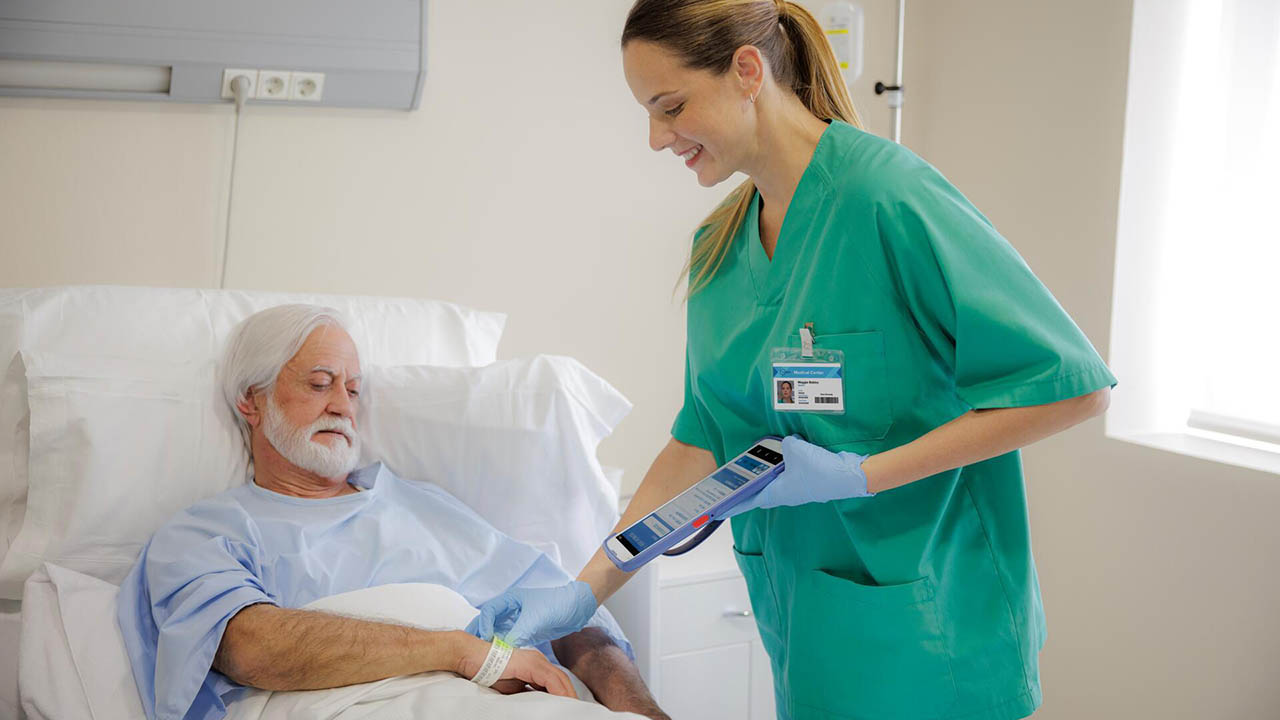
Why You May Want to Reconsider How You’re Handling “The Five Rights to Medication Administration” – and Medication in General
People shouldn’t have to worry about getting hurt when they go to a hospital. Nor should they be fearful that the medicines intended to help them heal could in fact cause harm. Yet, they do, and they are.
Seven in 10 patients around the world are concerned about receiving an improper dose of medication due to labeling errors, and they’re worried about the harm it could potentially cause them, according to feedback received in Zebra’s latest Pharmaceutical Supply Chain Vision Study. Patients are also concerned about receiving stolen, contaminated, tainted, expired, or counterfeit medicines or medications that were improperly handled/stored during transit and could have damage or diminished efficacy.
Their fears are not unfounded, either.
The World Health Organization estimates there are over one million deaths annually from counterfeit and substandard drugs, and that “one in 10 medical products circulating in developing countries are substandard or fake.” Even in higher income countries where less than 1% of all drugs sold are reported to be counterfeit, tens of millions of patients are at risk of illness or death each year from tainted medications.
This growing problem is why the European Union introduced the Falsified Medicines Directive a few years back and the U.S. Food and Drug Administration more recently enacted the Drug Supply Chain Safety Act (DSCSA). Specific measures must be put in place to prevent human error, oversight, and busyness from harming patients. But supply chain organizations are not the only ones responsible for preserving the quality and integrity of pharmaceutical drugs. Clinical professionals and support staff – those on the front lines of patient care – are just as accountable for patient safety. That’s why more healthcare systems must follow the lead of the Calderdale and Huddersfield NHS Foundation and University Health Kansas City (formerly Truman Medical Centers).
Research surrounding adverse medical events shows more patients are being hurt in healthcare settings around the world each year – in hospitals, ambulances and other environments that should be considered safe spaces. It’s reportedly safer to get on a plane – or jump out of one – than it is to go to a healthcare facility, according to the latest stats:
There is a 1 in a million chance of a person being harmed while traveling by plane, while only 1 in 1,310 skydives require attention from a medical facility. In comparison, there is a 1 in 300 chance of a patient being harmed while receiving care at a healthcare facility.
That’s terrifying.
Yet, they say the only way to fight one’s fear is to face it. So, here I am, on World Patient Safety Day, tackling the issue head on the best way I know how: by calling your attention to the root cause of many safety incidents (pharmaceutical mismanagement) and offering solutions I know will work (because I’ve seen them firsthand as a nurse, healthcare advisor, technologist and patient).
How to Manufacture, Distribute, Store and Administer “Medication Without Harm”
Since the theme of this year’s World Patient Safety Day is “Medication Safety,” let’s consider what it will take to build public trust in the quality and safety of pharmaceutical drugs, starting at the beginning:
Manufacturing: Drug manufacturers should consider improving inspection and quality control processes to build public trust in pharmaceutical safety. Manufacturers should also consider being more transparent about where medication ingredients are sourced and how raw materials and finished products are inspected, handled and stored. We’re seeing machine vision systems increasingly used for quality control and reporting compliance, which is a great first step. However, more “eyes” are needed across production and fulfillment operations. My colleagues recently spoke about some of the ways that manufacturers are leveraging RFID, temperature sensing and industrial automation technologies to gain full oversight of operations, create trustworthy digital records of every action, identify and mitigate quality issues, and increase accountability among those who handle medications and raw materials. I encourage you to check out this conversation if you haven’t already:
I also recommend that every drug manufacturer producing temperature-sensitive medication consider the use of temperature monitoring and sensing devices. There’s a reason why governments, non-government organizations (NGOs) and even specialty pharmacies mandate them for vaccines and biologics. It’s impossible to know if the drugs received in the last mile can be trusted, at least from a quality perspective. Just because it feels like it’s still cold enough when it arrives at the pharmacy or administration site doesn’t mean it has remained within the required temperature range the whole journey. Medication administrators and patients need to know that cold chain drugs have been properly handled since they came off the line, and temperature monitoring and sensing devices are the only true way to confirm that. Here’s proof:
Stories from the Edge: Maintaining Medication Temperature is Key to Patient Treatment
And if you aren’t sure which temperature monitoring and sensing devices to use, or that you really need to use these devices at the source, this quick read may help:
Distribution: Drugs change hands countless times downstream in the supply chain, even within a single warehouse or pharmacy. It’s too easy for someone to make a mistake. That’s why technology-led oversight is now mandated in many cases, either by regulatory bodies or companies’ quality management systems. No one wants to be the source of compromised drugs. Yet, it’s easy to fall into the trap of believing “any technology is better than no technology.” Not all technology will offer the same level of protection against supply chain breaches, contamination, spoilage and other incidents that put patient safety at risk as some of the linked resources above explained. So, be sure you consult with someone who understands the unique needs of pharmaceutical supply chain entities before committing to a specific barcode, RFID, or sensor-based track and trace solution.
You may also want to check out what your peers and even your competitors are doing to ensure drugs aren’t compromised while stored, packed or shipped. For example, specialty pharmacies like Altru and Preveon have implemented best practices to improve their inventory management and fulfillment processes and build patient confidence in the quality of the medicines they provide. As a result, they’ve also reduced waste and operating costs and increased compliance.
Administration: Though every effort to protect patient safety is critical, the efforts made by clinicians at the point of care are the most visible to patients. That’s why it’s so important to get the “five rights of medication administration” right. Patients need to see that doctors, nurses and pharmacists have a fail-proof system in place to confirm they’re receiving the right medication at the right time, at the right dosage and via the right route. Using a 2D barcode-based verification system can go a long way. The clinician can scan the patient’s wristband to pull up the associated electronic medical record (EMR) on their healthcare-grade handheld mobile computer or rugged tablet. They can then scan the label on the medication vial or IV bag for an automated verification that the drug in their hand is the same one prescribed for the patient. Administration route, dosing and timing details can also be corroborated automatically with that label scan. Once administration is complete, another scan of a patient’s wristband can update the EHR to indicate completion.
Even in an outpatient setting, such as a pharmacy prescription pickup, a scan of the barcode on a patient’s driver’s license or government ID can ensure positive patient identification (PPID), retrieval of the correct prescription order (if digitally submitted), and an automatic update of the EHR to indicate medication issuance. A barcode scan or RFID tag read can also ensure the right medication bottle or package is grabbed during the fulfillment process and that the medication isn’t expired.
Something else to remember: patient education is critical to safety during both in-patient and outpatient medication administration.
Equipping clinicians – or even patients – with rugged tablets like the Zebra ET4x-HC that provide information on the drugs they are receiving can go a long way to preventing contraindications and mitigating unfounded concerns that degrade trust in pharmaceuticals. Patients can use the tablet to find out who manufactured, distributed, and otherwise handled the drug from the point of production to the point of administration. They can also learn about the source of the medication’s ingredients, safety studies and inspections, potential side effects and other information they need to feel comfortable taking the medication.

Of course, even if you leverage all the technology tools available today to protect the integrity of the pharmaceutical supply chain, prevent administration errors and educate patients about drug safety, you might still encounter patient hesitancy. However, at least you and your teams can feel confident that you are doing everything in your power to improve the patient experience – and that you have a way to prove that you prioritize patient safety. You can literally show the world – through videos, tours and other visual means – that you’re paying attention to everything happening in your operation and that you’re using technology to reduce the risks of human error during the manufacturing process, distribution, storage, and administration. Improving patient confidence and building trust in the processes and procedures necessary to deliver quality healthcare will greatly improve the patient experience and lead to more positive outcomes.
###
What Changes Do You Need to Make to Improve Medication (and Patient) Safety?
Want to talk more about how to de-risk your operation and show that the medications you produce, distribute or administer are safe? Or do you feel that more can be done to ensure “the five rights of medication administration” are verified and patient safety is not compromised when clinicians are rushed or tired? You can reach an experienced pharmaceutical supply chain or healthcare solution architect here.
###
Related Reads:

Rikki Jennings, BSN, RN, CPN
Rikki Jennings, BSN, RN, CPN is currently the Chief Nursing Informatics Officer (CNIO) at Zebra Technologies where she is responsible for combining her knowledge of patient care, informatics concepts, and change management to effectively address the information and knowledge needs of healthcare professionals and patients to promote safe, effective, and efficient use of IT in clinical settings. She also serves as the strategic liaison for health IT efforts representing nursing and clinician needs.
Early in her nursing career, Rikki recognized a disconnect between purchased technologies and the understanding of their intended value at the bedside by her fellow clinicians and pursued Nursing Informatics. She is passionate about the utilization of technology to support safer, more effective care models. Over the past several years, her work in the healthcare IT industry has provided her an in-depth knowledge of the workflows and utilization of clinical technologies including clinical communication systems, bedside technology solutions, and data analytics tools in hospitals across the country. In 2019, Rikki was recognized in Crain’s Chicago Business’ Notable Women in Healthcare list. Rikki holds a Bachelor of Science in Nursing from University of Iowa.






